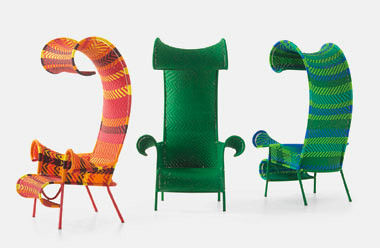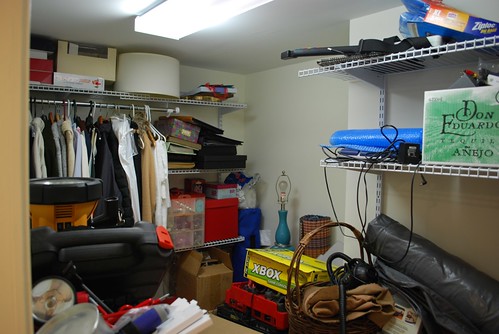It seems the Fiddle Leaf Fig aka Ficus Lyrata is the most desired house plant on the block.
The Fiddle Leaf Fig is native to Western Africa and typically grows in lowland tropical rainforests, but more and more we are seeing it thrive in suburban dining rooms and chic homes, from LA to NYC.
I have collected three Fiddle Leaf Fig trees. Two in my office and one at home. I suppose it just didn’t feel right until I had three “statement” house plants. Betsy also has three, my mother, a real gardener, has only one.
Here is a look at one of the multi-stem trees in my office.

Here are a few more fiddle leaf figs in interiors we admire.



This one is bananas beautiful among this custom furniture.


Can you believe the trunk on this one?

I got kind of lucky with my fiddle leaf fig scores.
My Mom has an old friend that is in the nursery business and he sold us 5 plants. Two of them were single stem (topiary). These are, in my opinion, the most desirable look. So, my Mom and I each got one of those. The remaining plants were multi-stem and I adopted one in my office and another in my dining room.

Betsy found her 15 year old Fiddle Leaf Fig, pictured above, via Craigslist. This was a major score at $85, but the old tree did not enjoy it’s move to a new location. It wasn’t long until the plant had dropped all of its leaves. After almost four years to recuperate, the tree is only now starting to appear full and healthy again, and really only on the bottom portion where it receives the most sunlight. She has had her doubts, but never gives up. She credits routine watering and the sunniest corner as the key to its recovery.
If you are interested in the ficus lyrata, here are some sources to purchase:

- Home Depot sells them (pic above by Kelly Robson of High Street Market)
- IKEA has a young single stem plant for only $13
- Houston Interior Plants sells them in 14″ pots
- Lowe’s is also known to stock them from time to time
How about going faux?
If your thumb isn’t green, or you have tried and failed enough times to give up, here are a few faux fiddle leaf fig options for you.
The most pressing issue concerning the Fiddle Leaf Fig by far is the care of the plant. It appears to be a bit finicky but is it really? Thanks to Instagram I know that EOS blogger Erin Gates has lost at least one, the McGrath ladies from Good Bones, Great Pieces are wondering why the spots are appearing on the leaves of their fig tree and Jenny from LGN recently wrote about buying a tree and the care that works for her tree.
This is what I’ve discovered, you have to get to know your plant and through trial and error see what works. For some that is risky but if you don’t let the tree travel too far down the wrong road then you aren’t likely to lose it.
This is what works for my trees.
- my tree receives direct sunlight
- I turn the plant every couple of months
- I water just enough to run out of the bottom of the pot twice a week (translates to roughly 2 cups a week) sometimes only once a week. I take special care to never over-water.
What I’ve observed when the plant is mistreated.
- if not turned or subjected to balanced light, the leaves may burn
- if the plant is given too little water it will defoliate (drop leaves)
- if the plant sits in water or is watered too frequently it will defoliate and the leaves will turn yellow and then brown, over-watering seems to be the most common mistake
Additionally I would recommend:
- re-potting the plant, I need to do this with all 3 of my trees. There are garden centers that will do this for you if you don’t have the tools or if you have a large plant
- fertilizing with a time release fertilizer twice a year, use something like Osmocote
- wiping the leaves periodically because they get dusty sitting in the house/apartment
I don’t think there is any reason to shy away from this tree especially when you can score one for $20.

Here are some more informational scores we’ve stumbled upon while researching care for our own plant.
ADVICE ON PRUNING A MULTI-STALK FIDDLE LEAF FIG
If you want it bushy, remove the apical meristems (growing tips). I would prune so the thickest stem is the tallest, the next thickest about 2/3 the ht of the tallest, and the thinnest about 1/2 the ht of the tallest. Once the Source of the growth regulator (auxin) that suppresses lateral growth is removed (by removing the growing tips of the stems) the plant will back-bud. When the new branches have 3-4 leaves on them, prune the branches back to 2 leaves, This is the fastest/best way to maximize ramification (branch/foliage density).
If you intend to separate the plants, now is the best time of year to do it, and no harm should come to the individual plants if you root-prune and divide, as long as you follow a few simple repotting guidelines. Repotting and root work is an essential part of keeping potted trees healthy, and the timing of the work you do on your trees can have a significant impact on how quickly they recover.
— From a Commenter on this Houzz Forum













This is great… Thanky. I’ve been seeing them at more and more garden centers lately! I still want them all. If anyone need encouragement, take it from me – as I am one of the least “routine” people that I know, so regular watering is not something that my fiddly dudes get from me.
My question is how do you prune the things to promote branching or not getting too top heavy!!!?
I have killed one, it wasn’t getting enough light and it was tiny and strugglin’ to start, but I have two single stalkers remaining, and I have a 12 year tree that I scored from Craigslist for $80 that I LOVE. She is my friend. The tree dropped almost all of its leaves after the move. She’s lived in three different corners of the HeffeHouse, but has found her happiest spot (and her most successful new growth) perched right next to the three windows in my dining room – getting plenty of morning and daytime sunshine, but not direct. I thought she MUST have root rot b/c of all the dropping – so I repotted her, but the roots were beautiful and fine. Now she’s in a larger pot. I think she just had to get rid of all of her growth from her last home and get used to my home. She’s been around for almost 2 years and she has almost all new growth. Leaves aren’t as big though – which I read is a sign of too little light.
One single stalker lives outside by the door and has LOVELY new growth, but its ALL up top which has made her very top heavy. One morning I found her totally leaning over and I though for sure she was dead…. But I turned her around and she’s standing stronger now.
The last lives in my den and was once the healthiest of the bunch, but I took her outside for a week while we bug bombed and got sick, and now she’s strugglin. She’s back inside, but she looks like she’s still pretty mad at me.
I agree with you though, they are well worth the time. I talk to my big 12 year old girl on the reg. She sits with me over my morning coffee. I usually just ask her questions about why she’s such a bit*h and won’t grow in her remaining empty spots.
Tell your mama gardner to teach me how to prune like a pro!
This is a fantastic post. Like so many, I’ve wanted to find a fiddle leaf fig but have only heard how easily they are to kill…your tips give me hope. Also, this makes me want to run out and check every Home Depot, Ikea and Lowe’s in the vicinity to find one.
Ashley, Go to IKEA first, Home Depot 2nd. I’ve never seen one at my Lowe’s in NC and I go frequently and almost always look at the plants.